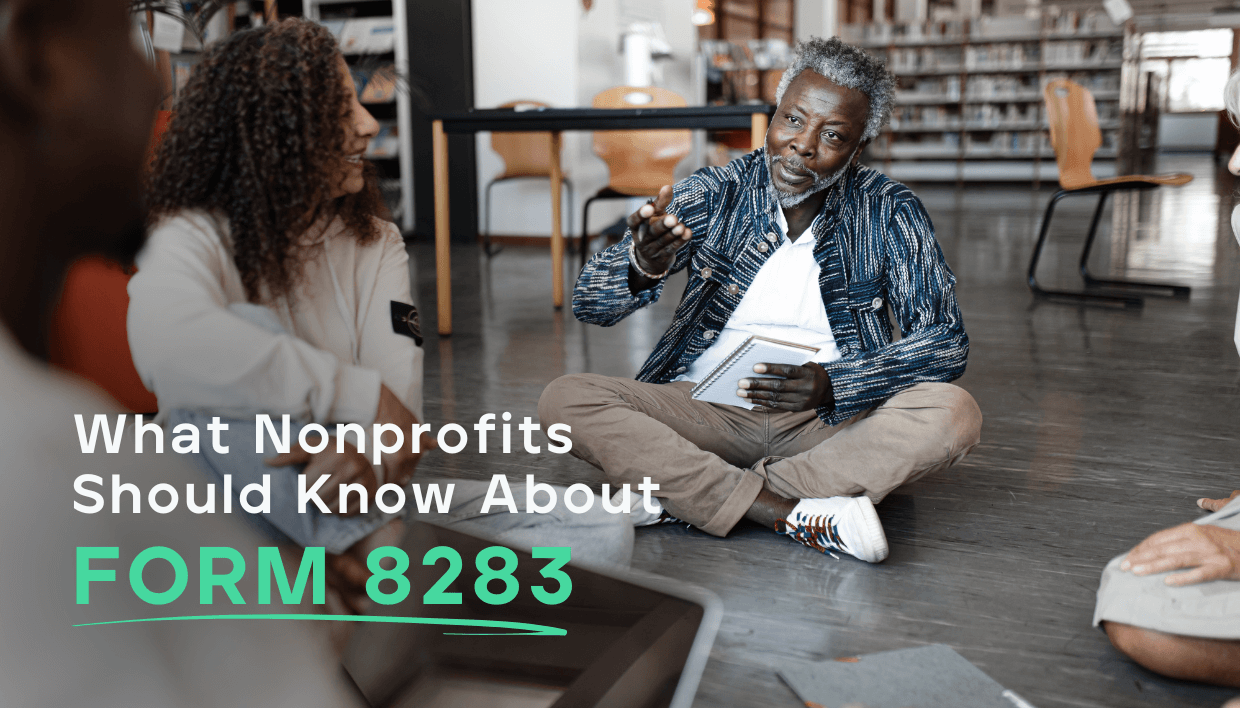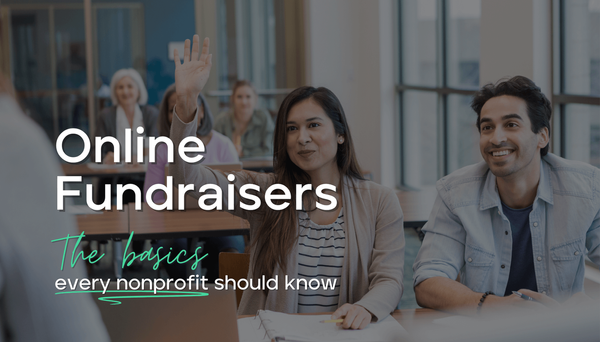4 Tactics to Capitalize on Your #GivingTuesday Momentum
The holidays are an exciting time. Start your nonprofit’s year-end giving on the right foot and ride your #GivingTuesday momentum with these best next steps.

This guest post was contributed by DonorSearch.
With all the commercial fervor that surrounds the holiday season on days such as Black Friday and Cyber Monday, it’s great to have just one day set aside to encourage charitable giving.
#GivingTuesday, the Tuesday after Thanksgiving and the day after Cyber Monday, is an entire day dedicated to a global generosity movement where individuals and organizations alike participate.
This year’s #GivingTuesday just recently passed, but that doesn’t mean that your best fundraising efforts should take a break. Far from it! #GivingTuesday kicks off the largest giving period of the year, the weeks around the winter holidays.
Year-end giving is a commonly known phenomenon, as November and December are the most popular months for fundraising. This is because the new year prompts people to get their finances in order while the holiday spirit makes them feel a little charitable—the perfect time for nonprofits to make their fundraising asks.
Use your #GivingTuesday campaign to jumpstart this giving season and make sure to continue those fundraising efforts. Donors give for many reasons, so ensure that you facilitate those gifts and capitalize on your #GivingTuesday momentum. Follow these best practices and begin your year-end giving:
1. ThankYouWednesday
1. Summarize and share #GivingTuesday results
1. Connect #GivingTuesday to your Year-end Giving Campaign
1. Review your #GivingTuesday campaign and compile reports
Most types of #GivingTuesday fundraising campaign exposes your nonprofit and cause to a wide range of people. Don’t end these relationships here, and raise your support by continuing engagement for the end of the year. Let’s get started.
#ThankYouWednesday
Looking back at past successful #GivingTuesday campaigns, it’s clear to see that while your team may have laid down your fundraising foundations, it is ultimately your donors and supporters who you have to thank.
Not only did these individuals give money to help your cause, they were also the ones who shared your campaign on their social media profiles, encouraging their own friends and families to learn about your organization and the good work you’ve done. For every type of fundraising letter you send out, you should send thank you’s out as well. Interested in fundraising letter templates for your year-end giving strategy? Click here.
Timing is key with donor thank you letters, so make sure you don’t wait too long. Your best bet is to send all your appreciation messages and letters the day after #GivingTuesday, and make this your nonprofit’s official #ThankYouWednesday.
As a fundraising professional, you already know why sending out thank-you’s is necessary to ensure positive donor relationships. However, there are a couple reasons why #ThankYouWednesday is so time-sensitive and integral to your long-term goals:
-
You want to directly recognize a donor’s #GivingTuesday efforts. If you take too long to send that thank-you email or post an appreciation picture on Instagram, the more your supporters will forget the details.
-
You want to include these supporters in your year-end giving campaign as well. You’re likely going to make another fundraising ask because it’s the end of the year. It’s necessary that you make sure each donor is thanked for the gift they already gave before you even attempt to reach out again.
-
You want to thank everyone involved in your campaign, especially any volunteers. It’s common that on #GivingTuesday you host a peer-to-peer or crowdfunding campaign because of its wide reach and for social media exposure. Supporters of these campaigns and your online followers voluntarily helped spread your cause and helped you raise a lot of money, so make sure they’re properly appreciated.
Your donors and supporters have given a lot so that your nonprofit can accomplish what it has. Make sure you do your part as well, and follow every #GivingTuesday with a #GivingWednesday.
Summarize and share #GivingTuesday results.
When people are feeling charitable and give to a cause, they generally want to know that what they’ve done has made a difference. The same goes with your #GivingTuesday campaign, no matter the #GivingTuesday idea you choose.
In 2018, #GivingTuesday brought in nearly $400 million in donations. The amount raised only grows more each year, but people aren’t giving to nonprofits for no reason. A key part of your #GivingTuesday campaign should be showing the positive impact you’re making.
As soon as possible, summarize your #GivingTuesday campaign and let your supporters know through email and social media about your next actions. The best way is to put your fundraising totals into concrete terms and connect that with a specific action.
Here’s an example of what this means: “This past #GivingTuesday, we raised $10,000 in fundraising revenue. That means that 100 villages will now have access to clean water, thanks to you!”
This message both summarizes your results and lets donors know that their efforts and money are recognized and are being put to good, actionable use.
Connect #GivingTuesday to your Year-end Giving Campaign
As you already know, your #GivingTuesday campaign is only the beginning of the busiest and most fruitful times for your nonprofit organization. Your year-end giving strategy should be more of a fleshed out campaign than your one day #GivingTuesday efforts, but there’s no reason that you shouldn’t connect the two.
Alongside your #GivingTuesday marketing, also promote your year-end campaign. If you hadn’t made year-end giving a huge priority in the weeks leading up to the holidays, don’t fret. You can still use the #GivingTuesday momentum to kickstart your year-end giving.
There are several ways that you can use #GivingTuesday to swing into the holiday season:
-
Encourage supporters who missed the #GivingTuesday event to give to your year-end campaign. There are going to be those on your email list who didn’t have time to give on #GivingTuesday or maybe were just unaware. Let them know that you missed them during #GivingTuesday but that they still have an opportunity to give if they’d like.
-
Ask recent donors to share their impact on social media. As stated in the previous section, you should be summarizing and sharing your #GivingTuesday results with your supporters. Ask them to post your nonprofit’s #GivingTuesday stats on their own social media. This helps spread the word of your cause, lets people know your nonprofit makes an actual difference, and encourages donors’ friends and family to give.
-
Let recent donors know about matching gift programs. With corporate matching gift programs, some of your donors can double or even triple their original donation without putting in any more money! Check if their employers host these programs and if your organization is eligible with a matching gift database and let those donors know with matching gift fundraising letters. (If you want to learn more about corporate matching gift programs, Double the Donation’s guide can help you learn the basics.)
You can easily use these tips with your nonprofit fundraising tools. For instance, segment your mailing list so that you only send year-end communications to relevant donors, like those who missed #GivingTuesday but may still want to give. With a dependable donor management or CRM system, you can segment your email recipients by recent donations, business affiliations, and more!
Year-end fundraising and #GivingTuesday don’t have to be isolated events—allow them to overlap to boost the fundraising revenue for both.
Review your #GivingTuesday campaign and compile reports.
As your year-end giving campaign is in full swing, make sure you truly understand how your #GivingTuesday campaign performed. Even the most successful fundraising campaigns should be reviewed in order to determine what could’ve been improved.
When evaluating the campaign, your fundraising team needs to compile reports based on concrete metrics and data. Make sure you do this early in the giving season. The next few weeks are going to be hectic and as January comes around you might forget a few essential details.
Make sure your nonprofit’s fundraising tools are integrated with your donor database or CRM system. Your nonprofit’s CRM is where you can access donor profiles full of information like personal details and past engagement data like recent donations or volunteer participation.
With your online donation tools and CRM system integrated, you can effectively compile reports based on different aspects of your #GivingTuesday campaign. Then, gauge which processes are more successful and which might need work for next year. Remember, #GivingTuesday is an annual event, so it’s always good to constantly think of ways you can improve.
A lot of popular CRM systems offer a wide array of integration opportunities. The popular Salesforce platform, for example, is fully built around the idea of integration and customization. If your nonprofit depends on the Salesforce CRM, check out DonorSearch’s list of integrated apps you can look into.
The yearly #GivingTuesday is an exciting day for nonprofits, but it doesn’t have to stop there. No matter if this is your first year participating in #GivingTuesday or you have been participating since its inception, there are some easy ways that you can use your #GivingTuesday momentum throughout the year-end giving season.
About the Author:

Sarah Tedesco is the Executive Vice President of DonorSearch, a prospect research and wealth screening company that focuses on proven philanthropy. Sarah is responsible for managing the production and customer support department concerning client contract fulfillment, increasing retention rate and customer satisfaction. She collaborates with other team members on a variety of issues including sales, marketing and product development ideas.





